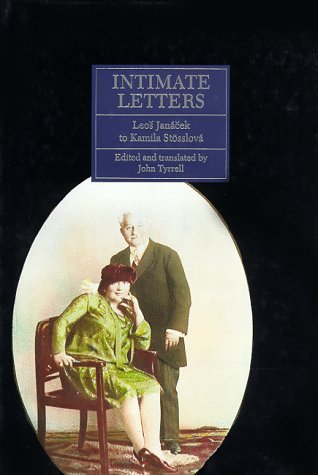Composed 1928; 26 minutes
In 1917, on holiday at a spa in Moravia, the 63-year-old Czech composer Leoš Janáček met Kamila Stösslová, then 26. Their chance meeting led not only to some of the greatest, most passionate music of the 20th century, but to one of the most extraordinary love affairs to be sought by a composer. For the next eleven years until his death, Janáček poured out his love for the young woman in some 700 love letters. The music Kamila Stösslová directly inspired includes four operas, the Sinfonietta, Glagolitic Mass, two piano concertos, the song cycle, The Diary of One Who Disappeared, and the string quartet to be played this evening, subtitled Listy důvěrné (Intimate Letters). The love letters, published in 1990, show a lonely man, unhappily married, channeling all his passion and creative energies into a complex, sublimated, ‘spiritual’ love affair with a married woman. She inspired some of his most passionate and poignant music. "All my works, all my operas contain one passion," he writes. His letters are unselfconscious and intimate, starting with polite requests for a meeting and ending with dreams of marriage and children. Stösslová, for her part, was married to an antiques dealer and, although, at her insistence, Janáček burnt most of her responses, she seems to have tolerated his written declarations of love without rancor, while keeping his quest for love alive. Indeed, Janáček, living in a form of court-authorized separation from his wife for a decade, was on holiday with Stösslová, her husband and two young sons in 1928 when he caught the pneumonia that was to lead to his death.
The String Quartet No. 2 is Janáček’s clearest and most intense declaration of love – “both real and imagined,” in the composer’s words. "I have begun to write something beautiful,” he wrote. "Our life will be contained in it. It will be called Love Letters . . . In this work I shall be alone with you.” The work was, as Janacek put it, “written in fire, unlike earlier works which were ‘written only in hot ash.’” The title Love Letters was changed to Intimate Letters. The first of the four ‘letters’, characterized by two strongly contrasting themes, describes his love on first encountering the young woman. The second, opening with a tender melody on viola, describes their first meeting. The third, the emotional climax of the work, portrays the fervor and intensity of their love and Janacek’s desire that they have a child, as the music dissolves into “a vision which would resemble your image, transparent, as if in the mist.” The finale travels through the many complex emotions associated with their relationship. “I want [this] to be a great love – a great composition,” Janáček wrote after the first performance of the quartet, his last completed work. “I listened to their playing today [and ask myself] did I write that? Those cries of joy, but what a strange thing, also cries of terror after a lullaby. Exaltation, a warm declaration of love, imploring, untamed longing. Resolution, relentlessly to fight with the world over you. Moaning, confiding, fearing . . . Oh, it’s a work as if carved out of living flesh. I think that I won’t write a more profound and a truer one.”
 First published in 1990 and translated into English shortly afterwards, these are some of the hundreds of love letters Leoš Janáček (right) wrote to Kamila Stösslová (seated) during the last eleven years of his life. The letters and the string quartet inspired by the love affair – “both real and imagined” – offer insight into the workings of the composer’s creative genius.
First published in 1990 and translated into English shortly afterwards, these are some of the hundreds of love letters Leoš Janáček (right) wrote to Kamila Stösslová (seated) during the last eleven years of his life. The letters and the string quartet inspired by the love affair – “both real and imagined” – offer insight into the workings of the composer’s creative genius.